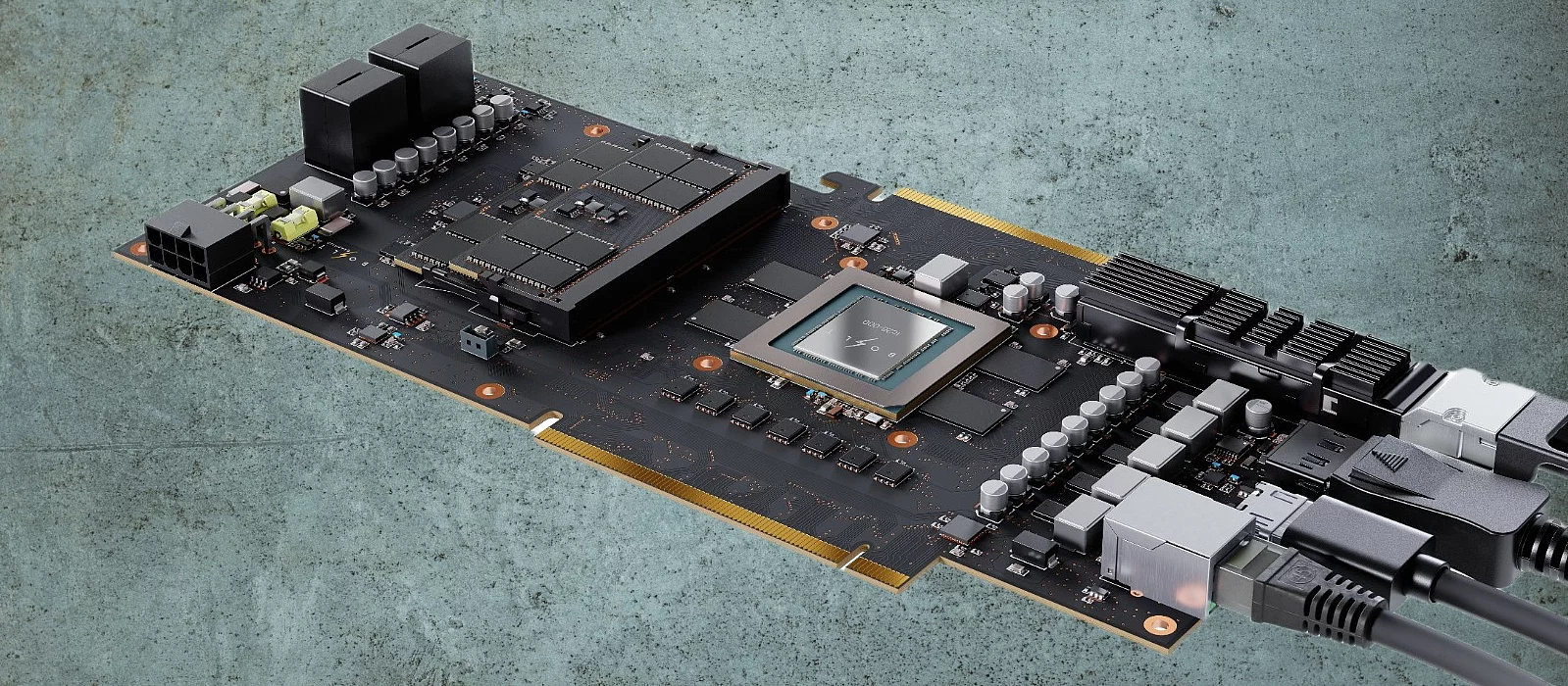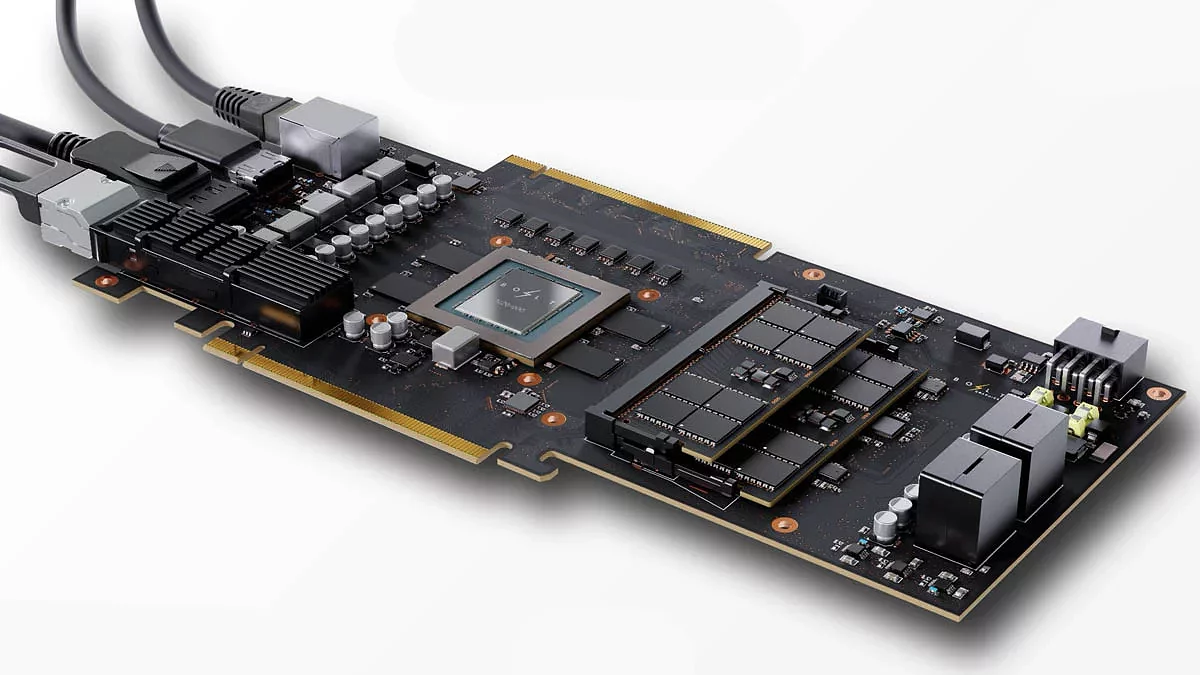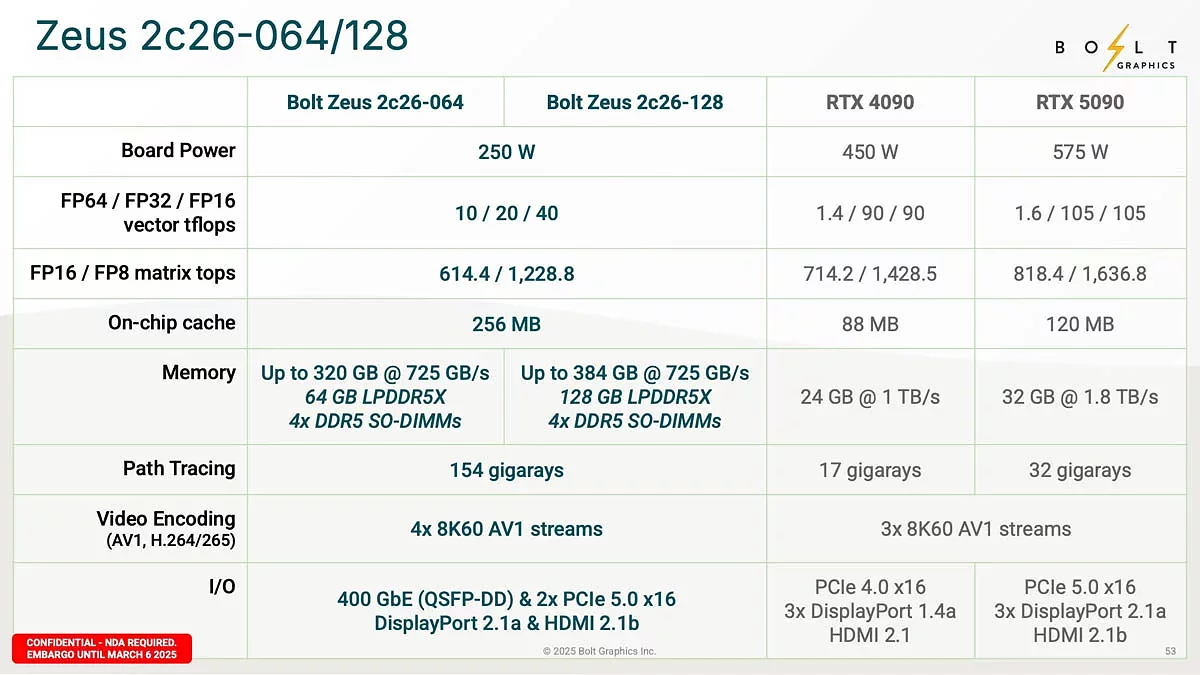RISC-V vs. NVIDIA: Bolt Graphics Unveils Zeus GPU with 2.25 TB of Memory and Record-Breaking Efficiency

Bolt Graphics has unveiled its Zeus series of graphics accelerators. Unlike conventional GPUs with fixed memory capacities, the new architecture offers unprecedented flexibility, combining innovative engineering solutions with open standards.
At the heart of Zeus lies a hybrid architecture, integrating scalar cores based on the open RISC-V RVA23 specification and modified vector units utilizing RVV 1.0. This marks the first instance of a GPU built entirely on RISC principles, opening the door for customization through proprietary extensions. A unified 128 MB cache and distributed accelerator blocks ensure efficient task distribution, from rendering to physics simulations.
The modular design of Zeus allows for dynamic resource scaling. The base Zeus 1c26-032 chiplet includes 32 GB of LPDDR5x memory and expansion slots supporting up to 128 GB of DDR5. The flagship Zeus 4c26-256 model integrates four chiplets, offering 256 GB of onboard memory and expandable SO-DIMM slots that push total capacity to a record-breaking 2.25 TB—far surpassing HBM3 and GDDR7 while remaining a cost-effective solution.
With a TDP of just 120W, the Zeus 1c26-032 delivers 5 TFLOPS in FP64 calculations—three times higher than NVIDIA’s RTX 5090 (1.6 TFLOPS). The Glowstick hardware ray tracer processes 77 gigarays per second, compared to the competitor’s 32 gigarays. However, NVIDIA maintains the upper hand in INT8 operations, positioning Zeus as a more specialized solution. The entry-level models come with a 400GbE port, while high-end versions boast six 800GbE OSFP ports, equivalent to 12 PCIe 5.0 x16 lanes. Early developer units will be available by late 2025, with mass production slated for 2026.
If Bolt Graphics delivers on its promises, Zeus could emerge as a true dark horse in the race for energy-efficient HPC, challenging NVIDIA’s dominance.
-
Ultimate Guide: Optimize Graphics and Boost Performance in Monster Hunter Wilds
-
AMD Plans Desktops with Mobile Graphics on Par with RTX 4060
-
PHASE ZERO Announced — A New Horror with PS One-Style Graphics, Reminiscent of the Original Resident Evil
-
Intel Revises Its Discrete Graphics Card Plans
-
Helgen from Skyrim Reimagined with Unreal Engine 5 Graphics

